To the Moon: Micah Johnson Turns His Baseball Stumble Into Crypto Dreams
Each summer Sports Illustrated revisits, remembers and rethinks some of the biggest names and most important stories of our sporting past. This year’s WHERE ARE THEY NOW? crop features a Flying Fish and a Captain, jet packs and NFTs, the Commerce Comet and the Say Hey Kid. Come back all week for more.
“Without even knowing anything about the story, I said I want one of these,” Summer Watson says. She stared at a one-foot-tall, hand-cast sculpture: a young Black boy, dressed in a white T-shirt, blue jeans and a yellow backpack, with an astronaut helmet looking toward the sky. “And I'm looking at this little figurine. … I don't know what it is, [but] I need one.”
She stood next to Micah Johnson, who three years earlier abandoned his MLB career to pursue his passion for art, at his solo exhibition at the L.A.-based Art Angels gallery in early February. Watson, a tech entrepreneur and cofounder of the hip-hop discovery app heir, remembers Johnson texting her throughout the winter about Aku, but she hadn’t parsed out what Aku was. “Aku is coming,” he’d say. “When I do Aku …”
Aku, the Moon God, is Johnson’s brainchild, born from when he heard his 4-year-old nephew ask, “Mom, can astronauts be Black?” Johnson had steadily built a portfolio throughout the pandemic, painting Black kids as cosmonauts, but he hadn’t unveiled the culmination of his vision. That was about to change.
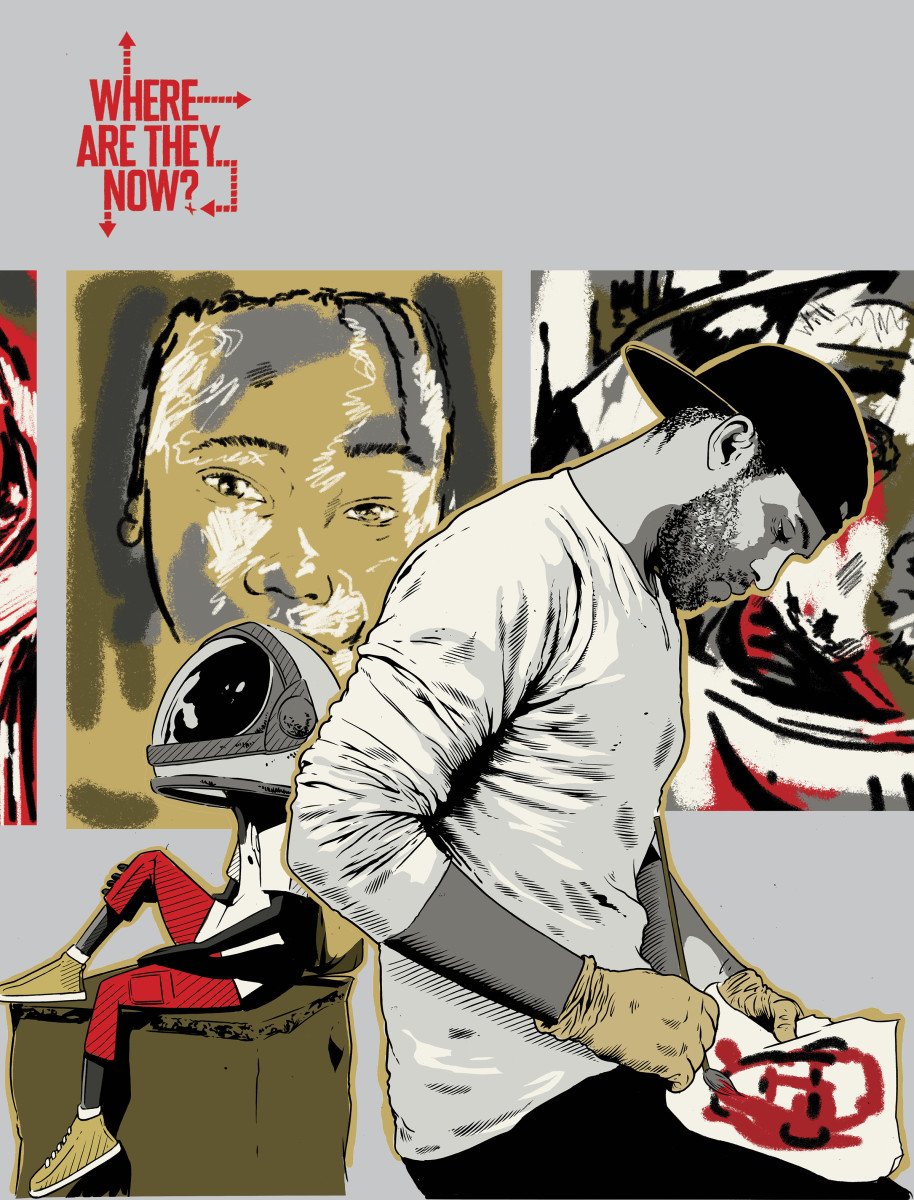
One week after Watson first laid eyes on Aku, she received a call from Cuy Sheffield, Visa’s head of cryptocurrency. Micah is doing that Aku drop on Sunday. Even then, Watson didn’t know what it was about. Sheffield detailed the backstory and how Johnson would be releasing Aku as a nonfungible token in 36 hours. Watson bought in.
Immediately she texted Pusha T, her friend and business partner, around midnight to clue him in. Watson and Sheffield knew each other through a group called Crypto for Black Economic Empowerment, a community of Black founders, investors and artists led by Erikan Obotetukudo. Together, Obotetukudo, Sheffield and Watson called anyone who would listen to tell them about Aku.
Then Sunday came. Within seven minutes, 1,402 editions of Johnson’s digital artwork sold for $1.4 million, in addition to a physical Aku statue that went for $305,000. The community came through, and others noticed. Two months later, in April, production companies Anonymous Content and Permanent Content purchased the film rights to Aku, making him the first NFT character optioned by a Hollywood studio.
Put another way: Total Aku-generated sales ($2.4 million plus) quadrupled Johnson’s top MLB contract ($535,000).
When George Floyd’s murder placed racial injustice in the spotlight, a new wave to support Black creators swelled. Johnson worked in the background, honing his style and message. Now, with the support of the CBEE, Aku sat at the forefront of an emerging crypto movement.
“It’s a lightning-in-the-bottle moment,” says Johnson, 30. “Right time, right place, right story, right character.”
He struck paydirt, but Johnson almost fell victim to the typical story of a borderline MLB prospect. Wrong place, wrong time and a career marred by injuries, full of what-ifs and what could have beens.
Nothing that a wine-and-paint night can’t solve.
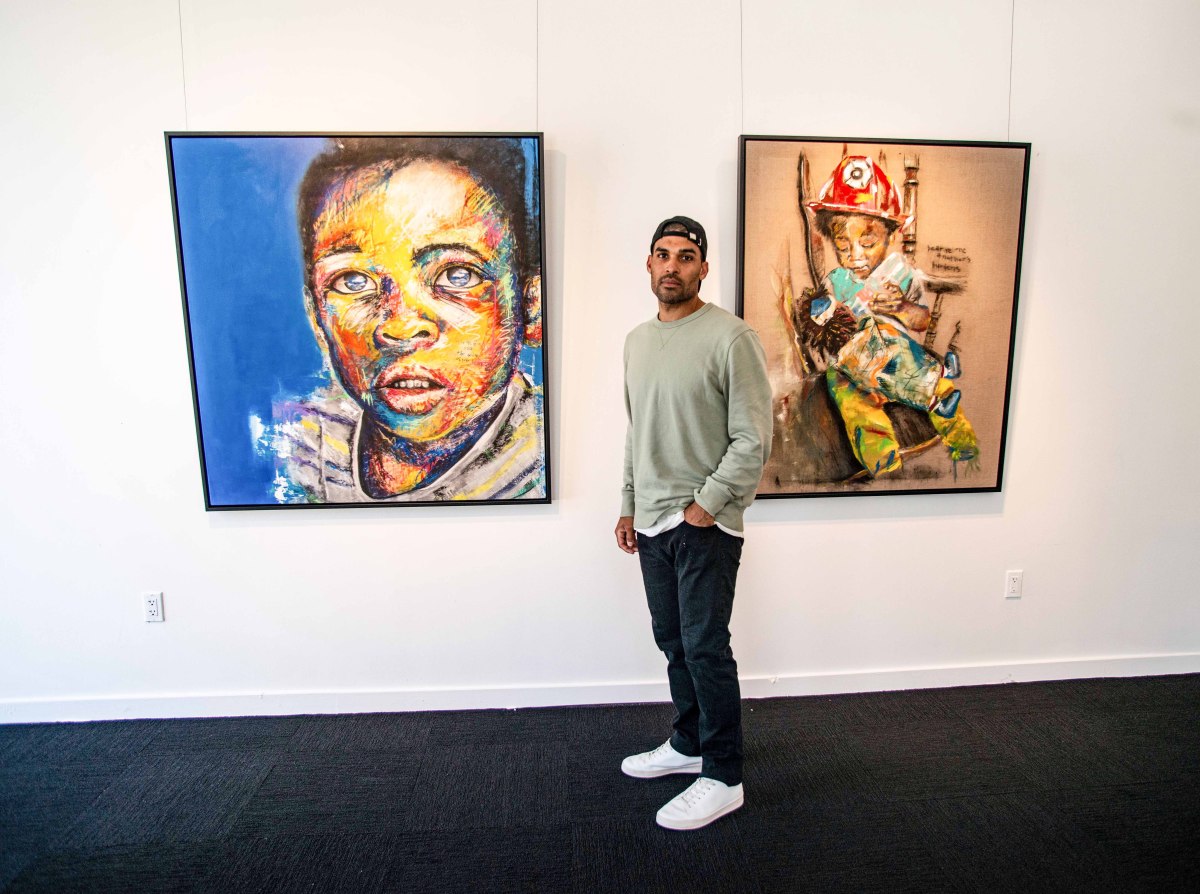
“Now when it comes to playing baseball, especially for the Dodgers, all sorts of wild things happen.” —The Ballad of Maury Wills, 1963
Before Johnson arrived in Los Angeles, he had sniffed success with the White Sox. Johnson batted .312 while scoring 106 runs and swiping 84 bags in 131 games in his first full minor league season. Those 84 steals led all levels of baseball, including the majors. A contact hitter with speed around the diamond, Johnson became Chicago’s seventh-best prospect and cracked the team’s 2015 Opening Day roster.
He lasted in the majors through May, batting .270, when Yolmer Sánchez took over second base duties, and finished with a .230 average after a brief call up at season's end. That December, the White Sox traded Johnson to the Dodgers in a three-team deal that returned Todd Frazier, who was coming off his second All Star season.
Before spring training, Johnson dabbled with watercolor art and took his then girlfriend to a paint-and-sip class. Dodgers manager Dave Roberts had a habit of asking newcomers what their hobbies were, later asking veterans to pair up and take part in their interests. When Roberts called on Johnson he said his hobby was painting, too embarrassed to say he played piano since childhood.
Or at least that’s how Johnson tells it.
“He thought he was witty,” says Dodgers third baseman Justin Turner. When other players said music, Turner recalls Roberts asking for a performance. “He figured, Dave [Roberts] is not going to make me stand up and paint a picture in front of the team. That would take too long, so I’m safe here.”
Instead, Roberts asked Johnson to paint a portrait of longtime Dodger Maury Wills, who was at Camelback Ranch instructing players on bunting and baserunning. Johnson made a watercolor painting of Wills mid-swing, wearing his Dodgers uniform. Looking back, Johnson admitted it was “terrible.” At the time, though, Turner and Adrián González approached Johnson to tell him how good it was.
Roberts’s assignment turned into an obsession. After he missed the cut, Johnson continued to work on his artistic craft when he returned home from games with the Dodgers’ Triple A affiliate. He’d paint past midnight, sleep, wake up, paint more and head to the ballpark. By season’s end, Johnson had more than 10 completed works.
“[It was] trial and error,” Johnson says. “I still fail to this day.”

Johnson had a day job, though, one that collided with his side gig. His Triple A batting average slipped from .315 to .261, and he committed 17 errors. L.A. dumped Johnson to the Braves in January 2017 for a player to be named later and cash considerations—two weeks before he was slated to host a private showing to benefit the Dodgers Foundation with pop-art duo Shelby and Sandy. (The event ran as scheduled; Johnson had Turner and a few other players design a piece for auction.)
Two months later Johnson fractured his left wrist while making a diving catch during spring training, adding onto an injury history that included a torn labrum, surgery to repair his ulnar nerve in his right elbow and a season-ending left hamstring strain. He came back and appeared in 18 games with the Braves. While his major league opportunities dwindled, Johnson hosted his first solo art exhibit at Atlanta’s Woodruff Arts Center.
In fewer than 31 days, Johnson was waived and subsequently claimed by the Reds, Giants and Rays. Johnson worked on commissions for players around the league, including a portrait of Ken Griffey Jr. for Rays pitcher Blake Snell and an alligator tattoo for Braves second baseman Jace Peterson.
At his final stop, Johnson was having what he says was the best spring training of his life for Tampa. But he couldn’t sleep or eat much. He felt down all of the time, leading him to ask the team doctor for Adderall. The team doctor declined; instead, he referred Johnson to another doctor who diagnosed him with bipolar disorder.
Johnson began taking lithium, a mood stabilizer used to treat manic and depressive episodes, and he felt like it sucked the life out of him. He missed the Rays’ 40-man roster, was sent to the Triple A Durham Bulls and batted .198—the worst single-season minor league average of his career. On Nov. 2, 2018, Johnson elected for free agency and walked out on baseball.
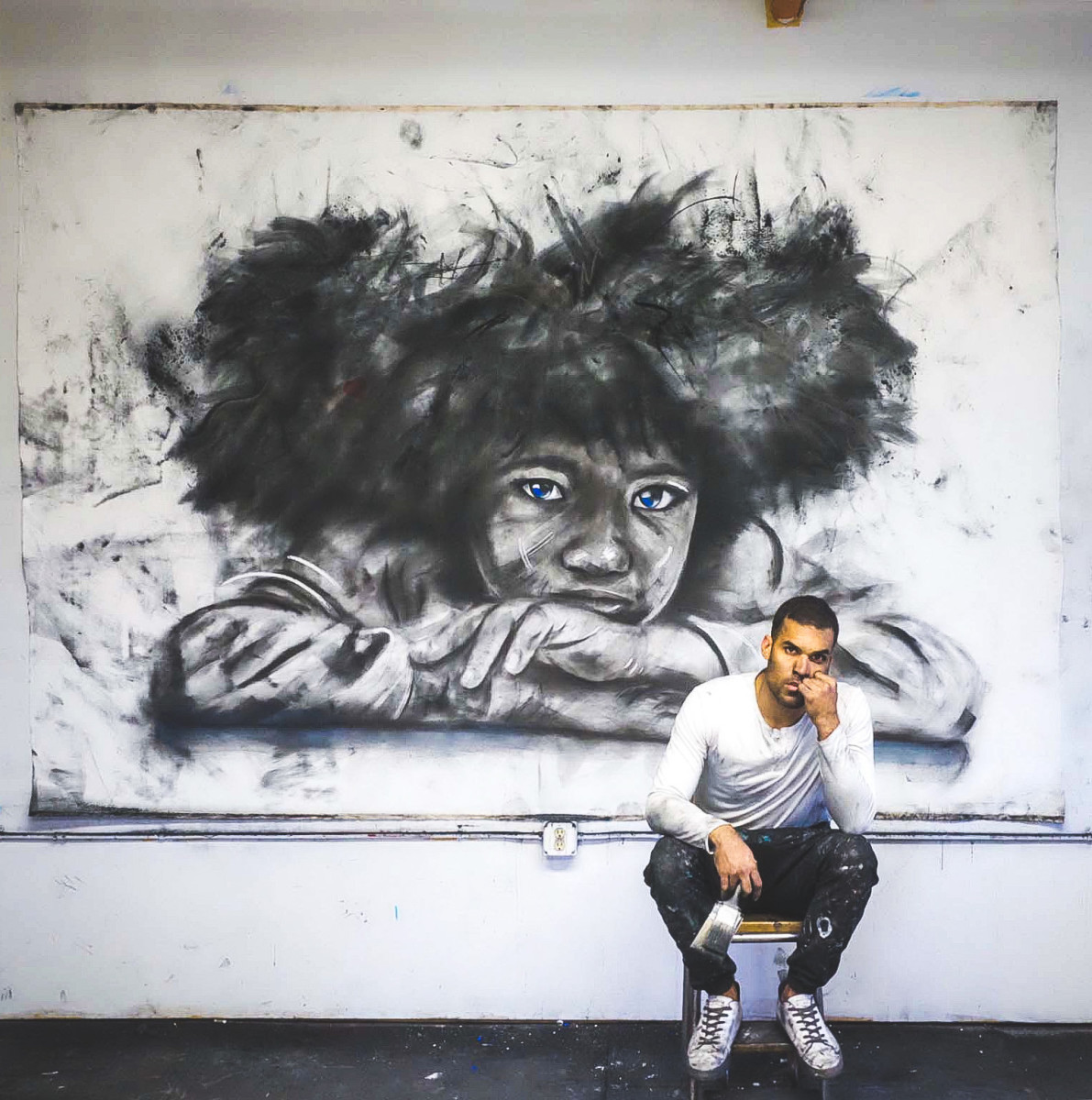
One year after he dropped his bat for a brush, Johnson had no job, no sales and no gallery representation. He had a newborn on the way and painted out of his garage, hauling artwork to local bars in the rain.
“You’re looking at your bank account, you’re looking at your expenses, they’re not adding up. And it’s like ‘OK, now what?’” Johnson says. “You have two options. You’re either going to sit back and settle, or you’re going to innovate.”
Before the world unearthed digital artwork from its crypto underground, Johnson remembers sitting on his computer in late 2019, reading about this new technology called nonfungible tokens (NFTs). Every NFT is an immutable digital asset, like an image or animated object. It has an electronic fingerprint that confirms its uniqueness. Imagine owning the Mona Lisa, but stored online.
Not quite Leonardo da Vinci, Johnson saw NFTs as a way to make money. He could create the art he wanted to make, too, rather than taking commissions. He went to Discord, a group messaging app, to find out more. Johnson learned how to animate with Adobe After Effects and listed two items on SuperRare, a digital auction house. Each sold for 3.75 ethereum (then the equivalent of $1,013), more money than he ever received for his physical work.
“I was hooked,” Johnson says. “I'd get into Discord and hit people up about crypto, blockchain, NFTs. Just being a sponge. Everybody was open to talk.”
Johnson’s style underwent a transition, too. He started with acrylic paint and landed with charcoal. (“It fits me. My brain is very erratic and charcoal is raw emotion,” Johnson says.) Around the same time, he was at his sister’s house when his nephew asked, “Mom, can astronauts be Black?”
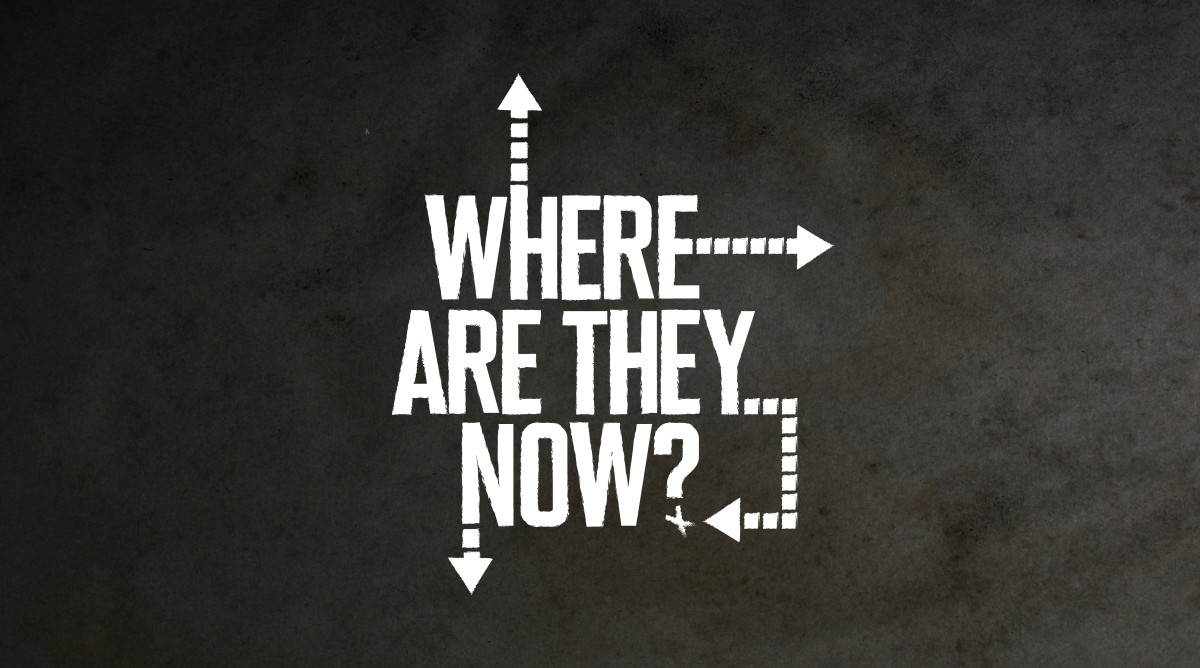
Read More Where Are They Now? Stories
That conversation unlocked a common theme that tailed Johnson’s disparate artistic disputes: a desire for children to dream without restraint. He wanted to inspire kids to explore all of their talents with a children's book about a ballplayer who wasn't the best on his team but enjoyed playing the flute. His first exhibit in Atlanta, titled “What Lines?,” encouraged conversations about transcending limits placed by socioeconomic status, race and gender. The astronaut became the focus through which Johnson channeled those ideas.
Johnson doubled down. During the pandemic, he and his girlfriend, Katie, and their infant daughter moved 12 hours northeast from North Carolina to New Hampshire. He took refuge in a reclusive studio along the New England coast, pulling all-nighters until black chalky material rimmed his fingernails and collected in his ears. With gestural lines and loose brush strokes, Johnson developed dramatic portraits of young, Black children, some outfitted in space suits. It soon turned into a collection that landed Johnson his first exhibit with Art Angels that August.
That summer Johnson connected with 3-D artist Durk van der Meer. Based in Curaçao, van der Meer started his career as an architectural visualizer and recently switched to building virtual avatars, characters and worlds. Johnson had something in mind.
“It wasn’t long before we created that first NFT, with Aku walking down the hallway,” van der Meer says. “He had this idea of his character and sketched it out. And he wanted it in 3-D.”
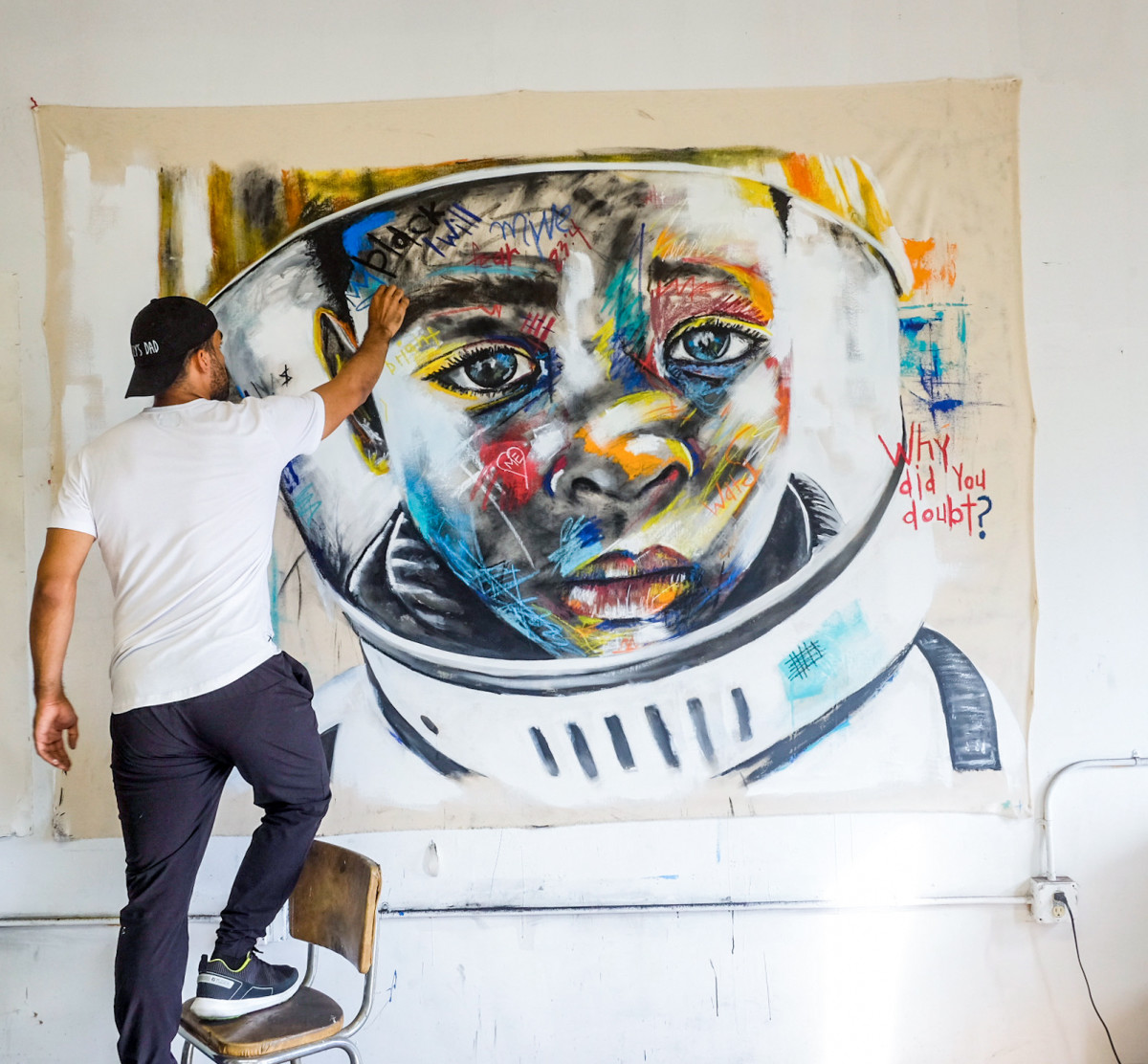
Rather than a group of corporate executives engineering a character from the top down, Johnson and van der Meer have built Aku’s world one “chapter” at a time. Each installment is released as an NFT. The first, Genesis.001, features Aku striding along a checkerboard tile floor with portraits of fellow adolescent cosmonauts reflecting off the sheen of his helmet. The second shows Aku riding a graffitied subway car and peering through the window as a billboard claims WE ARE BUILDING A WORLD WHERE ALL CAN THRIVE.
“It kind of makes me emotional thinking about it,” says Erikan Obotetukudo, the leader of the Crypto for Black Economic Empowerment group. “To see that his character could become a character that all of these Black kids around the world could see themselves in, that was when it went to another level.”
There’s already a community behind Aku, one that launched him from an NFT to a nascent independent property in fewer than 60 days. Even with backers like Pusha T, Justin Turner and Shawn Mendes, who started the production studio Permanent Content that acquired Aku’s film rights, Johnson downplays his endeavor’s monetary boon. Now, Johnson focuses on one question.
How can we reward the community for their early belief in Aku?
Johnson envisions Aku theme parks, books and educational programs. He imagines moviegoers presenting their NFT for admission, rather than a ticket. But he also created a public Aku discord server with a tier-based reward system based on how many unique chapters a collector owns. Their first task: help design the young cosmonaut’s first friend. Those without an NFT decided on the character’s gender (a girl) and hair color (black) while collectors determined more intricate aspects like complexion, personality and dreams. At an auction in July, the person who bids the highest on the NFT will receive the right to name Aku’s new companion.
"It's not so much about a one-off piece of art as it is about the community that surrounds it," says Turner, who owns the first two AKU NFTs and plans on collecting all 10. "He's painting pictures of hope for so many people."
Johnson and van der Meer mapped out 10 chapters, hoping to release the last at Art Basel in Miami at year’s end.
“I don’t know anything about TV or film, but what I do know is my message,” says Johnson. When looking back at his baseball career, Johnson recognizes he is fortunate to have achieved his dream. “It’s authentic to me. I’m speaking my life through this character.”
Before Aku, Johnson had a mission to empower Black children to see themselves in high art. He masterminded a project that became "‘sä-v(ə-)rən-tē" (pronounced sovereignty) and enlisted the help of two young Black brothers, Jacque, 8, and Rayden, 7. The children stand side-by-side in an overgrown field, pointing at a closed door. An astronaut awaits them on the other side. Last November, it sold for $117,278—then the second-highest amount bid on any NFT.
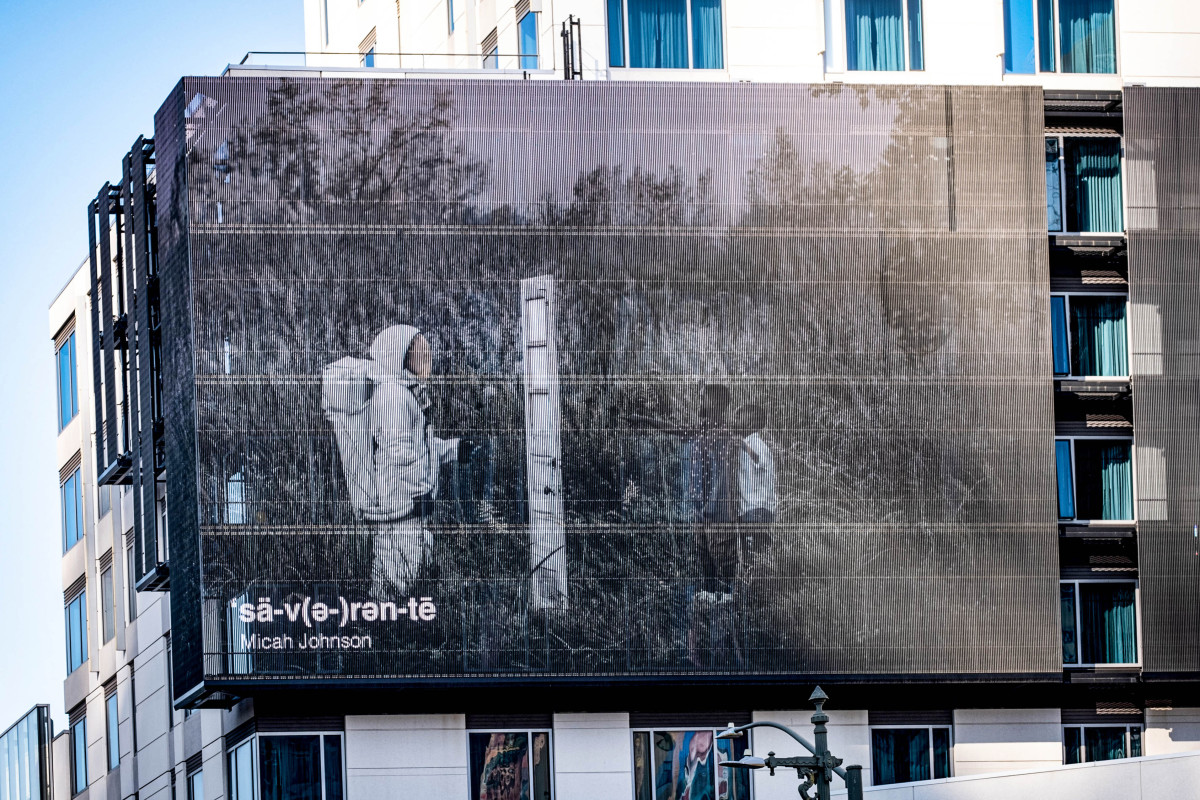
Every year, the artwork is programmed to display a Bitcoin wallet that anyone can contribute to. Each donation cracks the door a little wider. When Jacque and Rayden turn 18, they will disappear from the image and gain full access to the crypto donations.
Johnson remembers the shoot day. One of the boys said he wasn’t smart enough to be an astronaut. But he put the helmet on anyway. His entire mood changed.
“That helmet had a powerful gravitational force to pull kids into believing. I've seen the reactions,” Johnson says. “That's the most rewarding thing I've ever been a part of in my life.”
More Where Are They Now? Stories:
• The Charmed Season: Revisiting Derek Jeter’s Origin Story
• Katie Hamilton Will Speak for Herself, Thank You
• Pete Weber Won’t Grow Old
